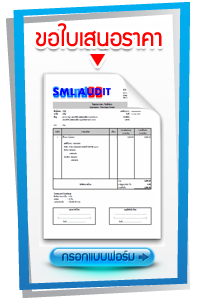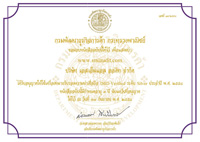บริษัท เอสเอ็มแอล ออดิท จำกัด เลขทะเบียนนิติบุคคล 0115555017811 -สาขาบางนา,สมุทรปราการ
ที่อยู่ : เลขที่ 59/294 ซ.อ๊อกฟอร์ด 2 ถนนศรีนครินทร์ บ้านกลางเมือง British town หมู่ 16 ตำบล : บางแก้ว
อำเภอ : บางพลี จังหวัด :สมุทรปราการ รหัสไปรษณีย์ : 10540
มือถือ : 080-553-7088 /080-5537077 โทร :023494340 /02-758-8994 แฟกซ์ : 021020819
อีเมล :sale@smlaudit.com, smlaudit@hotmail.com
เว็บไซต์ : www.smlaudit.com
| Taxation and Accounting in Thailand Personal Income Tax (PIT) is a direct tax levied on income of a person. A person means an individual, an ordinary partnership, a non-juristic body of person and an undivided estate. In general, a person liable to PIT has to compute his tax liability, file tax return and pay tax, if any, accordingly on a calendar year basis. Assessable income is divided into 8 categories as follows :
(1) income from personal services rendered to employers; (2) income by virtue of jobs, positions or services rendered; (3) income from goodwill, copyright, franchise, other rights, annuity or income in the nature of yearly payments derived from a will or any other juristic Act or judgment of the Court; (4) income in the nature of dividends, interest on deposits with banks in Thailand, shares of profits or other benefits from a juristic company, juristic partnership, or mutual fund, payments received as a result of the reduction of capital, a bonus, an increased capital holdings, gains from amalgamation, acquisition or dissolution of juristic companies or partnerships, and gains from transferring of shares or partnership holdings; (5) income from letting of property and from breaches of contracts, installment sales or hire-purchase contracts; (6) income from liberal professions; (7) income from construction and other contracts of work; (8) income from business, commerce, agriculture, industry, transport or any other activity not specified earlier. 2.2 Deductions and Allowances
Certain deductions and allowances are allowed in the calculation of the taxable income. Taxpayer shall make deductions from assessable income before the allowances are granted. Therefore, taxable income is calculated by: TAXABLE INCOME = Assessable Income - deductions - allowances
2.3 Tax Credit for dividends Any taxpayer who domiciles in Thailand and receives dividends from a juristic company or partnership incorporated in Thailand is entitled to a tax credit of 3/7 of the amount of dividends received. In computing assessable income, taxpayer shall gross up his dividends by the amount of the tax credit received. The amount of tax credit is creditable against his tax liability. 3. Progressive Tax Rates 3.1 Progressive Tax Rates Personal income tax rates applicable to taxable income are as follows.
3.2 Separate Taxation There are several types of income that the taxpayer shall not include or may not choose to include such income to the assessable income in calculating the tax liability. Income from sale of immovable property Taxpayer shall not include income from sales of immovable property acquired by bequest or by way of gift to the assessable income when calculating PIT. However, if the sale is made for a commercial purpose, it is essential that such income must be included as the assessable income and be subject to PIT. Interest The following forms of interest income may, at the taxpayer’s selection, be excluded from the computation of PIT provided that a tax of 15 per cent is withheld at source:
Dividends Taxpayer who resides in Thailand and receives dividends or shares of profits from a registered company or a mutual fund which tax has been withheld at source at the rate of 10 per cent, may opt to exclude such dividend from the assessable income when calculating PIT. However, in doing so, taxpayer will be unable to claim any refund or credit as mentioned in 2.4. 4. Withholding Tax For certain categories of income, the payer of income has to withhold tax at source, file tax return (Form PIT 1, 2 or 3 as the case may be) and submit the amount of tax withheld to the District Revenue Office. The tax withheld shall then be credited against tax liability of a taxpayer at the time of filing PIT return. The following are the withholding tax rates on some categories of income.
5. Tax Payment Taxpayer is liable to file Personal Income Tax return and make a payment to the Revenue Department within the last day of March following the taxable year. Taxpayer, who derives income specified in c, d or f in 2.3 during the first six months of the taxable year is also required to file half - yearly return and make a payment to the Revenue Department within the last day of September of that taxable year. Any withholding tax or half-yearly tax which has been paid to the Revenue Department can be used as a credit against the tax liability at the end of the year. | |||||||||||||||||||||||||||||||||||||||||||||||||||||||||||||||||||||||||||||||||||||||||||||||||||||||||||



 บุคคลทั่วไป 2 คน
บุคคลทั่วไป 2 คน

